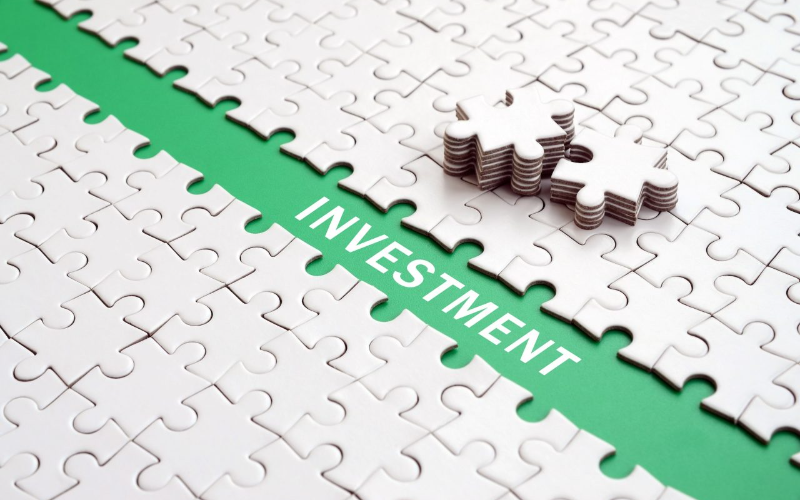05.02.2024
What is Compounding?
In simple terms, compounding is the process of earning interest on both your initial investment and the accumulated interest from previous periods. Over time, this creates a snowball effect, where your wealth grows at an increasing rate. The longer you leave your investments to compound, the greater the growth will be.
Imagine you invest $10,000 at an annual interest rate of 7%. In the first year, you’d earn $700, bringing your total to $10,700. In the second year, you’d earn 7% on $10,700—not just your initial $10,000—resulting in even higher earnings. Over time, this process accelerates, making compounding an incredibly effective way to build wealth.
What is Compounding?
In simple terms, compounding is the process of earning interest on both your initial investment and the accumulated interest from previous periods. Over time, this creates a snowball effect, where your wealth grows at an increasing rate. The longer you leave your investments to compound, the greater the growth will be.
Imagine you invest $10,000 at an annual interest rate of 7%. In the first year, you’d earn $700, bringing your total to $10,700. In the second year, you’d earn 7% on $10,700—not just your initial $10,000—resulting in even higher earnings. Over time, this process accelerates, making compounding an incredibly effective way to build wealth.
How Does Compounding Work in Investing?
When you invest in assets such as stocks, bonds, or mutual funds, the returns you earn can either be withdrawn or reinvested. Reinvesting those returns allows your money to compound. Here’s how it works with different investment vehicles:
- Stocks and Mutual Funds: By reinvesting dividends or capital gains, you can increase your share count, which means your future returns will be based on a larger investment base.
- Bonds: Interest earned on bonds can be reinvested to purchase additional bonds, thereby compounding the overall return.
- Real Estate: Rental income can be reinvested into property upgrades or additional properties, creating compounded returns over time.
The Time Factor: Why Starting Early Matters
One of the key components of compounding is time. The longer your money is allowed to compound, the more significant the growth. Even small contributions can grow into substantial amounts over a long period.
Let’s look at an example:
- If you invest $5,000 annually at an 8% return starting at age 25, by the time you turn 65, you could have over $1.2 million.
- If you start the same $5,000 annual investment at age 35, your total by age 65 would be around $559,000.
The 10-year difference in starting age results in nearly double the amount at retirement, illustrating the immense value of starting early and letting compounding do its work.
Key Strategies to Maximize the Power of Compounding
1. Start Early
The earlier you begin investing, the more time you give your money to compound. Even if you start with small amounts, consistency over time leads to significant results.
2. Reinvest Your Earnings
Whenever possible, reinvest dividends, interest, or capital gains rather than withdrawing them. This ensures that your earnings continue to grow and compound over time.
3. Be Consistent
Regular contributions, even if modest, can have a big impact thanks to compounding. Whether it’s a monthly investment into a retirement account or a recurring contribution to a stock portfolio, consistency is key.
4. Be Patient and Let Time Work for You
The compounding effect takes time to generate substantial results. Avoid pulling money out too early or reacting to short-term market fluctuations. A long-term mindset allows compounding to work to your advantage.
5. Automate Your Investments
Consider setting up automatic contributions to your investment accounts. This ensures that you stay consistent, regardless of market conditions or personal circumstances, allowing compounding to continue uninterrupted.
The Impact of Compounding on Retirement Planning
Compounding plays an especially important role in retirement planning. The earlier you start saving for retirement, the less you need to contribute each month to reach your target goal. Additionally, compounding helps ensure that your investments keep growing, even after you’ve stopped contributing during retirement.
For instance, if you begin investing in your 20s, you may only need to contribute a small percentage of your income to achieve a comfortable retirement. On the other hand, if you delay investing until your 40s or 50s, you may need to contribute much larger amounts to catch up—missing out on the power of compounding.
Final Thoughts
Compounding is a simple yet transformative concept that every investor should understand and leverage. It rewards patience, consistency, and early action. Whether you’re just starting your investment journey or seeking to optimize your current strategy, harnessing the power of compounding can lead to remarkable financial growth.
As your investment consultant, I’m here to help you make smart, informed decisions to maximize the potential of your investments. Let’s work together to build a compounding strategy that ensures your wealth grows steadily, year after year.


